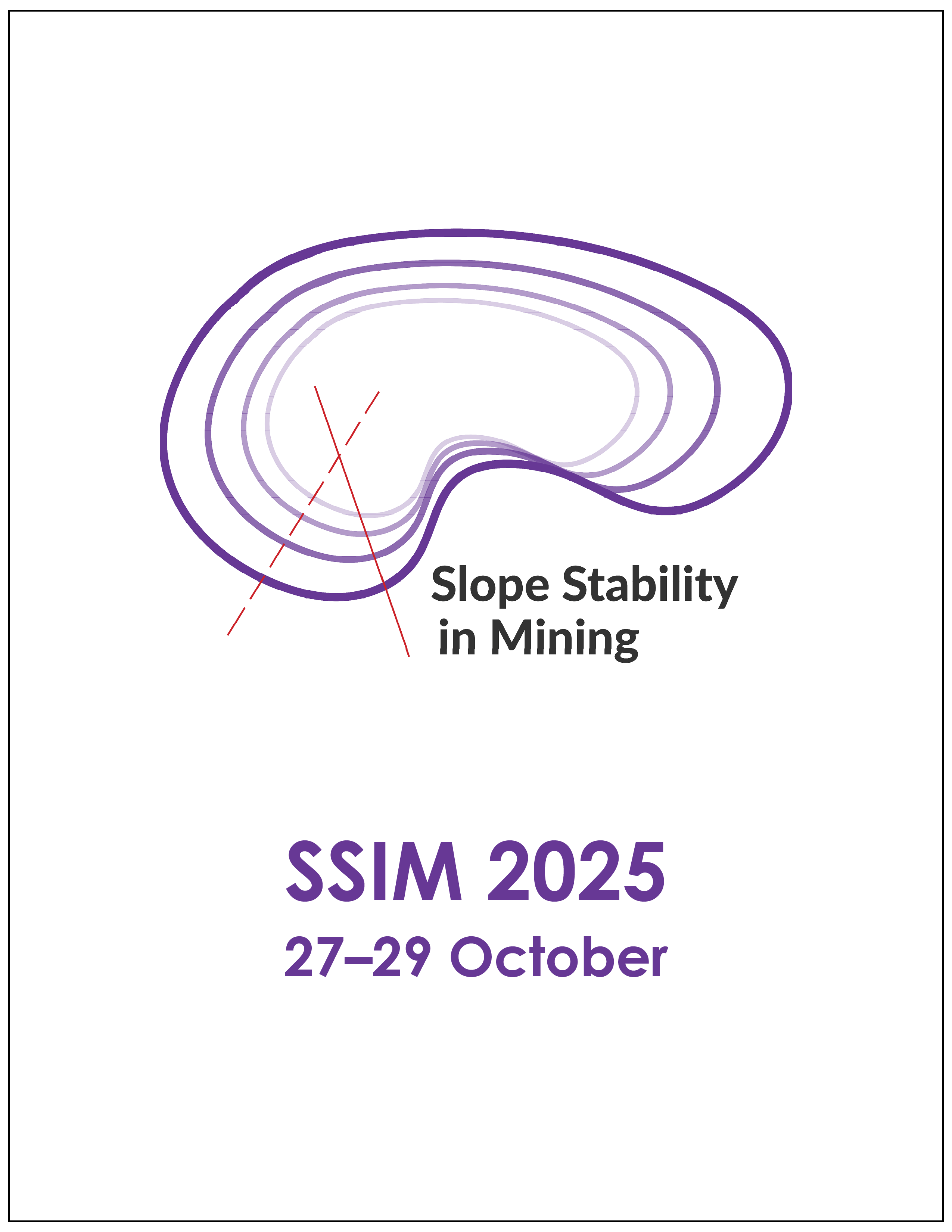Using discrete fracture networks to assess how defect size and other variables affect the formation of wedge failures in open pits

|
Authors: Watton, J; Weir, F; Fowler, M |
DOI https://doi.org/10.36487/ACG_repo/2535_38
Cite As:
Watton, J, Weir, F & Fowler, M 2025, 'Using discrete fracture networks to assess how defect size and other variables affect the formation of wedge failures in open pits', in JJ Potter & J Wesseloo (eds), SSIM 2025: Fourth International Slope Stability in Mining Conference, Australian Centre for Geomechanics, Perth, https://doi.org/10.36487/ACG_repo/2535_38
Abstract:
Wedge failure is the sliding of a rock block on the line of intersection of two discontinuities oriented to form a wedge, and is influenced by geological and geometric factors. This paper compares traditional industry-accepted pit slope design methods with a discrete fracture network (DFN) approach. The geotechnical model and observed performance from a case study site are presented and used to benchmark the analysis results. Major discontinuities measured from photogrammetry and pit face mapping data from the case study site were used for the analysis, and the observed performance was assessed from a photogrammetry point cloud created using drones. Both the industry-accepted and DFN methods indicated that the probability of failure increases with steeper slope angles, however, the industry-accepted methods overestimated this probability compared to the observed slope performance. The DFN models were more closely aligned with the observed slope performance. The study highlights that discontinuity size and the spatial distribution of discontinuity sets are key drivers of the potential for wedge instability and the resulting slope performance, which have flow-on impacts for developing reliable pit slope designs.
Keywords: wedge, discrete fracture network, open pit slope design
References:
Dershowitz, WS, Lee, G, Geier, J, Foxford, T, La Pointe, P & Thomas, A 2015, FracMan - Interactive Discrete Fracture Data Analysis, Geometric Modelling, and Exploration Simulation, computer software user documentation, Golder Associates Inc, Seattle.
Fowler, MJ 2013, ‘Structural data bias in the digital age’, in PM Dight (ed.), Slope Stability 2013: Proceedings of the 2013 International Symposium on Slope Stability in Open Pit Mining and Civil Engineering, Australian Centre for Geomechanics, Perth,
Fowler, MJ, Weir, FM, Sullivan, TD & Mostyn, GR 2012, ‘Application of discrete fracture networks for open pit slope design’, Proceedings of the 11th Australia New Zealand Conference on Geomechanics, Australian Geomechanics Society, Melbourne.
Grenon, M & Hadjigeorgiou, J 2008, ‘A design methodology for rock slopes susceptible to wedge failure using fracture system modelling’, Engineering Geology, vol. 96, no. 1, pp. 78–93,
Laing, W 2005, ‘The data gap in geology and its implication for resource estimation’, Australian Institute of Geoscientists Bulletin, vol. 42, pp. 37–53.
McMahon, BK 1974, ‘Design of rock slopes against sliding on pre-existing fractures’, Proceedings of the Third Congress International Society of Rock Mechanics, vol. 2, part B, National Academy of Sciences, Washington, DC, pp. 803–808.
Priest, SD 1993, Discontinuity Analysis for Rock Engineering, Springer, Dordrecht.
Rogers, S, Moffitt, K & Chance, A 2006, ‘Using realistic fracture network models for modelling block stability and groundwater flow in rock slopes’, Canadian Geotechnical Conference, pp. 1452–1459.
Rogers, SF, Elmo, D, Beddoes, R & Dershowitz, B 2009, ‘Mine scale DFN modelling and rapid upscaling in geomechanical simulations of large open pits’, in JR Read (ed.), Proceedings of the International Symposium on Rock Slope Stability in Open Pit Mining and Civil Engineering, University de los Andes, Santiago.
Rogers, S, D’Ambra, S, Dershowitz, WS & Turnbull, R 2018, ‘Probabilistic bench scale slope designs based upon realistic discrete fracture network models’, Proceedings of the 2018 International Symposium on Slope Stability in Open Pit Mining and Civil Engineering, BCO Congresos, Barcelona.
Starzec, P & Anderson, J 2002, ‘Probabilistic predictions regarding key blocks using stochastic discrete fracture networks – examples from a rock cavern in south-east Sweden’, Bulletin of Engineering Geology and the Environment, vol. 61, pp. 363–378.
Valerio, M, Rogers, S, Lawrence, KP, Moffitt, KM, Rysdahl, B & Gaida, M 2020, ‘Discrete fracture network based approaches to assessing inter-ramp design’, in PM Dight (ed.), Slope Stability 2020: Proceedings of the 2020 International Symposium on Slope Stability in Open Pit Mining and Civil Engineering, Australian Centre for Geomechanics, Perth, pp. 1017–1030,
Watton, JW & Weir, FM 2023, ‘Using discrete fracture networks to understand wedge failures for open pit slope design’, in PM Dight (ed.), SSIM 2023: Proceedings of the Third International Slope Stability in Mining Conference, Australian Centre for Geomechanics, Perth, pp. 491–504,
Weir, FM & Fowler, MJ 2014, ‘An introduction to discrete fracture network modelling and its geotechnical applications’, AusRock 2014: Third Australasian Ground Control in Mining Conference, Australasian Institute of Mining and Metallurgy, Melbourne.
Weir, FM & Watton, JW 2022, ‘Discrete fracture network modelling for a shallow cover road tunnel system’, DFNE2022 3rd International Discrete Fracture Network Engineering Conference, Santa Fe,
Wesseloo, J & Read, J 2009, ‘Acceptance criteria’, in J Read & P Stacey (eds), Guidelines for Open Pit Slope Design, CSIRO Publishing, Melbourne, pp. 219–234.
© Copyright 2025, Australian Centre for Geomechanics (ACG), The University of Western Australia. All rights reserved.
View copyright/legal information
Please direct any queries or error reports to repository-acg@uwa.edu.au
View copyright/legal information
Please direct any queries or error reports to repository-acg@uwa.edu.au

